Synopsis:
In this way, death was a return to the perfect—hardly anything to be feared at all. And, therefore, the joy of life was discovering this perfection in our lifetime so long as we are on earth. In other words, seeking the highest forms of beauty, virtue, ethics, and art for example gives us purpose in our short few laps around the sun.
Hello Philosophy People!
Welcome to day 2 of our discussion on death—you are the brave few willing to breach the topic, and I’m hopeful you’ll also see the reward of increasing your love for life! (I know I have in preparing)
Today we’ll be looking at death (and life/reality) from the writings of Plato.
Plato is a philosopher from ancient Greece, and tutored a student almost as famous as he—Aristotle (you might have heard of him). If you look at today’s headline image, it’s a painting by Raphael (The School of Athens) in which the great thinkers of Greek antiquity are depicted.
At the center of the painting are Plato and Aristotle frozen in their timeless debate about reality. Plato is pointing up, to the world of perfect forms, while Aristotle has his hand outstretched to the earth, arguing to Plato that reality is here and there is nothing more.
This argument has persisted in every major religion, all the way into modern science. Not to get too far ahead of ourselves, but this same tension has actually produced an entirely new branch of modern physics called Quantum Gravity, but more on that later this week.
All this to say, Plato saw the world as an expression of a larger metaphysical reality, and hypothesized the soul was capable of living in this reality eternally—in perfection.
There are two tools that Plato has left behind to help us understand his ideas about reality, life, and death.
First, his “Line” and next his “Ladder.” (images below)
The line shows us how Plato thought the world to be. That is, existing in the reality we can perceive and in one we cannot. These worlds are separated roughly into the visible world and the intelligible world.
As you move down the ladder, one moves from the perfect idea, down to a shadow, or imperfect representation of the pure form.
For example, he believed that we were mere shadows of our perfect, eternal selves. He saw beauty in the world as an expression of the eternal standard of beauty. He saw eagles and trees and all material reality as simply a dim representation of its eternal state.
This matters for 3 reasons:
1) Plato’s world of forms introduces the concept of duality into the Western Psyche (soul and reality as separate)
2) This duality would create the modern Christian vision of “heaven” and the separate soul during the Platonic renaissance in the Catholic Church about a thousand years after Plato
and 3) It was a sharp departure and important step away from the fundamentalist religion of the time.
Even though Greek myth was masterfully constructed as a metaphor for virtue, life, and death the Greek people of Plato’s time had reduced the metaphor to fundamental literalism, and resisted looking at the gods as anything other than unpredictable beings to be venerated.
Plato’s world of the forms is a step away from this religious fundamentalism, and paves the way for someone like Aristotle to point firmly to the ground and inspire a frenzy of work in empirical science.
But what about death?
Plato saw our eternal selves as our perfected being existing forever, and our current life simply the latest expression of that perfected existence.
All this to say, Plato thought we were immortal beings having a temporary, imperfect experience. So much so that he posited children would remember their perfectibility better than adults and we should listen to them for their purity of heart.
This gave rise to an entire framework of thought that saw life as a joyous struggle back toward perfection and harmony with our deepest and purist self. Discovering this internal drive and deep memory of the perfect is the point of life. And taken to its logical conclusion, one might assume this happened life after life.
In this way, death was a return to the perfect—hardly anything to be feared at all. And, therefore, the joy of life was discovering this perfection in our lifetime so long as we are on earth. In other words, seeking the highest levels of beauty, virtue, ethics, and art for example gives us purpose in our short few laps around the sun.
For Plato, this process is achieved by focusing on the separation between body and soul, and illuminating the truth of our spirit. This is done through what he calls the “dialectic,” which is a mental process of reducing all of life to its constituent parts and studying them mentally. Sort of like a thought experiment where we focus not on reality, but the eternal forms they represent.
In this way, we have achieved death before death, in the sense we are ready to be received in the perfect world of forms.
I hope this was enjoyable, and I’m excited to take it another level deeper tomorrow as we hear from Pluto’s pupil, Aristotle, about birth, death, and the life we live in between.
Don’t forget to share with a friend!
Leave a comment
And if you haven’t already, make sure to subscribe!
-TPP
References:
The Great Conversation, By Norman Melchert
Images of Line and Ladder:
The Great Conversation, By Norman Melchert
Headline Image:
https://commons.wikimedia.org/wiki/File:%22The_School_of_Athens%22_by_Raffaello_Sanzio_da_Urbino.jpg




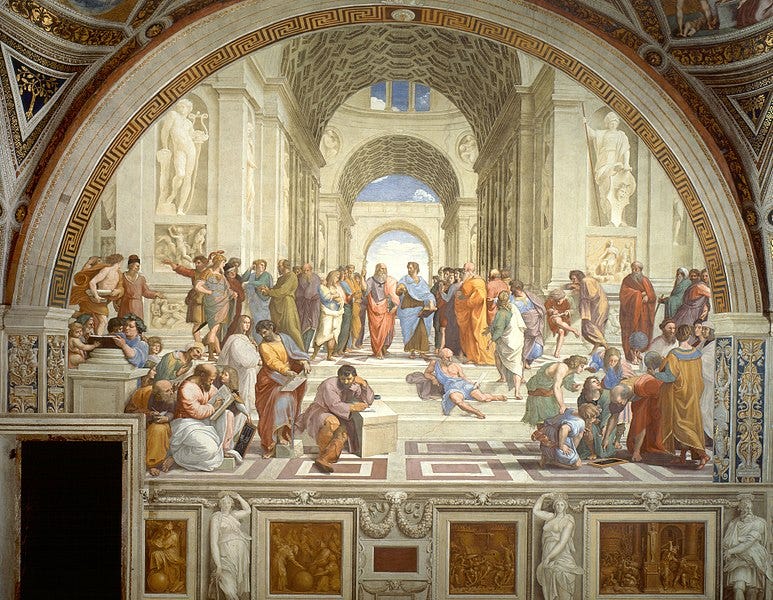







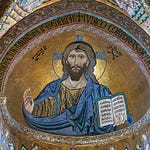
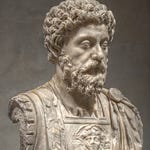
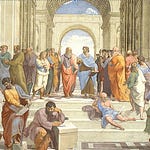
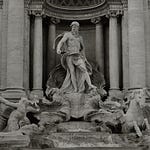

On Dying